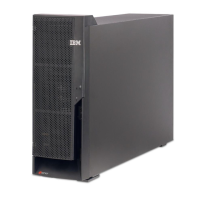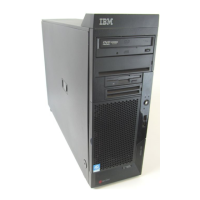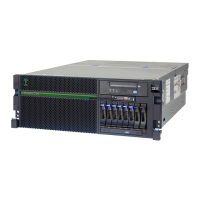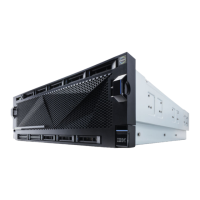5486AdvTech.fm Draft Document for Review October 18, 2004
12 IBM Eserver i5 and iSeries System Handbook
iSeries servers are commercial servers designed to handle many programs and
users running simultaneously. Single-level storage enables very high-speed
switching between active and idle programs and users as compared to other
operating system architectures. It contributes directly to iSeries high performance
characteristics.
The iSeries server address size is vast. iSeries models can address the number
of bytes that 64 bits allows it to address. The value 2
64
is equal to
18,446,744,073,709,551,616. Therefore, the iSeries models can address
18,446,744,073,709,551,616 bytes, or 18.4 quintillion bytes. To put this into more
meaningful terms, it is twice the number of millimeters in a light year. Light travels
at approximately 6,000,000,000,000 miles in one year.
Single-level storage also enables another extremely important iSeries customers
benefit—
object persistence. Object persistence means that the object continues
to exist in single-level storage (unless purposely deleted by the customer).
Memory access is extremely fast. A typical server requires that information be
stored in a separate file system if the information is to be shared or retained for a
long time. The maintenance and awareness of the separate location can impact
the total cost of ownership of the application.
Persistence of objects is extremely important for support of object-oriented
databases for data accessibility and recovery. Objects continue to exist even after
their creator goes away. iSeries models are uniquely positioned to exploit this
characteristic of object persistence. Customary systems use a less elegant
mechanism that requires them to store their persistent objects in a separate file
system, with all the attendant performance implications of application and
operating system implementation.
Technology Independent Machine Interface
iSeries servers are atypical in that they are defined by software, not by hardware.
When a program presents instructions to the machine interface for execution, it
thinks that the interface is the system hardware, but it is not. This interface is
known as Technology Independent Machine Interface. The instructions
presented to TIMI pass through a layer of microcode before they are
“understood” by the hardware itself.
This comprehensive design insulates application programs and their users from
changing hardware characteristics. When a different hardware technology is
deployed, IBM rewrites sections of the microcode to absorb the fluctuations in
hardware characteristics. As a result, the interface presented to the customer
remains the same.
